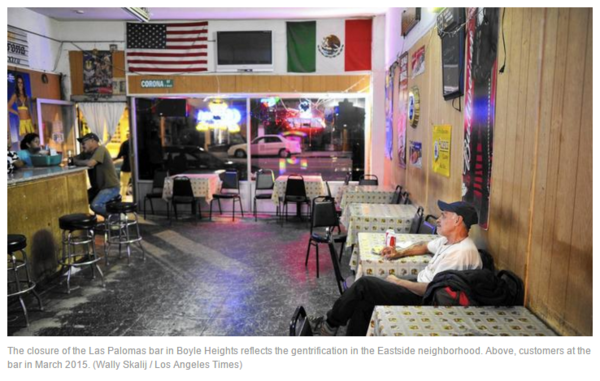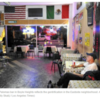For years, Boyle Heights seemed a neighborhood cooped up in the still embryonic stage of gentrification, or "gentefication," a term coined to reflect change driven substantially by Latinos with roots in the Eastside neighborhood.
Boyle Heights hasn't seen close to as much gentrification as Silver Lake and Highland Park, or even neighboring Lincoln Heights, with a mostly Mexican American community but more ethnic, racial and socioeconomic diversity and a bigger stock of wood-framed 19th and early 20th century Victorian and Craftsman homes. But it's hard to imagine a neighborhood that has featured a stronger line-in-the-sand pushback to gentrification.
The sense that the big "G" is just around the corner has loomed over Boyle Heights for years. There has been talk for years about transforming the 14-story Art DecoSears, Roebuck & Co. building on Olympic Boulevard into a complex of condos, retail space and restaurants.
"I think part of it is people getting pushed out of their other neighborhoods and coming here, and they don't want that to happen here," said Erick Huerta, who moved into the community when he was 7, left and later returned. "It's like the last bastion. They're holding down the flag."
Camilo Valentin, a Realtor who lives in Lincoln Heights and whose area includes Highland Park, El Sereno, City Terrace and Boyle Heights, said Boyle Heights still remains too rough around the edges for change to come too fast — despite dramatic declines in violent crime, including by gangs, over the last generation. But Valentin said change is inevitable.
"Highland Park didn't have a lot of resistance. That thing swooped in within a year," he said of gentrification. "Everybody got caught kind of by surprise. Boyle Heights, that's not happening because it's very, very rooted."
To read more of the story written by Brittny Mejia of the Los Angeles Times, please click here



Comments (0)